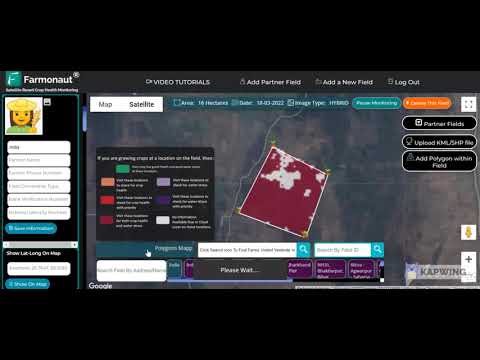Revolutionizing Australian Vineyards: GIS and Sustainable Winegrowing Practices Boost Global Export Potential
“Australian wine exports reached $2.8 billion in 2020, with sustainable practices contributing to 15% growth in premium markets.”

Welcome to our comprehensive exploration of the thriving Australian wine industry and its journey towards sustainable winegrowing practices. In this blog post, we’ll uncork the potential of vineyard management through the lens of cutting-edge technologies and innovative approaches that are reshaping the landscape of viticulture in Australia. As we delve into the world of precision viticulture technology and its impact on wine production, we’ll also examine how these advancements are propelling Australian wines onto the global stage.
The Rise of Sustainable Winegrowing in Australia
Australia’s wine sector has long been renowned for its quality and diversity. However, in recent years, there has been a significant shift towards sustainable winegrowing practices. This transition is not just about environmental stewardship; it’s a strategic move that’s enhancing the quality of Australian wines and boosting their appeal in global wine markets.
- Reduced water usage through precision irrigation
- Integrated pest management reducing reliance on chemicals
- Energy-efficient winery operations
- Biodiversity conservation in vineyard ecosystems
These sustainable practices are not only beneficial for the environment but are also proving to be a boon for the Australian wine export market. Consumers worldwide are increasingly seeking out wines produced with eco-friendly methods, and Australia is positioning itself at the forefront of this trend.
GIS in Viticulture: Mapping the Future of Wine Production
One of the most revolutionary tools in modern vineyard management is Geographical Information Systems (GIS). This technology is transforming how vintners understand and interact with their land, leading to more precise and efficient wine production tools.
GIS in viticulture allows for:
- Detailed mapping of soil types and microclimates within vineyards
- Monitoring of grapevine health and stress levels
- Optimized harvest timing based on grape maturity data
- Efficient resource allocation for irrigation and fertilization
By leveraging GIS technology, Australian winemakers are able to produce wines that more accurately reflect their terroir, enhancing the unique characteristics that set Australian wines apart in the global marketplace.
Precision Viticulture: A Game-Changer for Wine Quality
“GIS-enabled precision viticulture has reduced water usage by up to 30% in Australian vineyards, enhancing sustainability and wine quality.”
Precision viticulture technology is revolutionizing the way grapes are grown and wine is produced in Australia. This approach combines GIS data with other technologies such as drone imaging, soil sensors, and weather stations to provide vintners with unprecedented insights into their vineyards.

Key benefits of precision viticulture include:
- Targeted application of water and nutrients
- Early detection of pest and disease issues
- Improved grape quality and consistency
- Reduced environmental impact
These advancements are not only improving the quality of Australian wines but also making wine production more sustainable and cost-effective. This is crucial for maintaining competitiveness in the global wine export market.
Digital Agriculture Solutions: From Vineyard to Bottle
The integration of digital agriculture solutions is transforming every aspect of wine production, from grape growing to winemaking and marketing. These innovative tools are helping Australian wineries to streamline operations, improve quality control, and enhance traceability.
Some key digital agriculture solutions being adopted include:
- AI-powered harvest prediction models
- Blockchain for supply chain transparency
- IoT sensors for real-time monitoring of wine fermentation
- Big data analytics for consumer behavior insights
These digital tools are not only improving efficiency but also helping Australian wineries to meet the growing demand for transparency and traceability in the global wine market.
Navigating Global Wine Markets: Export Strategies for Australian Wines
As Australian wineries embrace sustainable practices and innovative technologies, they are well-positioned to capture a larger share of the global wine market. However, success in international markets requires a strategic approach to export.
Key strategies for boosting Australian wine exports include:
- Targeting emerging markets in Asia and Europe
- Emphasizing Australia’s unique terroir and sustainable practices
- Leveraging digital marketing to reach international consumers
- Participating in international wine competitions and events
By focusing on these strategies, Australian wineries can capitalize on the growing global demand for high-quality, sustainably produced wines.
Innovative Marketing Approaches for Australian Wines
In an increasingly competitive global wine market, innovative marketing approaches are essential for Australian wines to stand out. Digital platforms and social media are playing a crucial role in reaching and engaging with wine consumers worldwide.
Effective marketing strategies include:
- Virtual wine tastings and online masterclasses
- Influencer partnerships to reach younger demographics
- Interactive wine labels with QR codes linking to vineyard stories
- Gamification elements in wine apps to enhance consumer engagement
These innovative approaches are helping Australian wines to build brand recognition and loyalty among global consumers.
Overcoming Regulatory Challenges in Wine Exports
Navigating the complex regulatory landscape of international wine trade is a significant challenge for Australian exporters. However, with the right approach, these challenges can be turned into opportunities.
Key strategies for overcoming regulatory hurdles include:
- Staying informed about changing regulations in target markets
- Investing in compliance management systems
- Collaborating with industry bodies for collective advocacy
- Leveraging technology for efficient documentation and traceability
By proactively addressing regulatory challenges, Australian wineries can ensure smooth access to international markets and build trust with global consumers.
Funding Opportunities for Australian Wineries
Access to funding is crucial for Australian wineries looking to invest in sustainable practices and innovative technologies. Fortunately, there are various funding opportunities available to support the growth and development of the Australian wine industry.
Some key funding sources include:
- Government grants for sustainable agriculture initiatives
- R&D tax incentives for innovation in winemaking
- Export market development grants
- Private equity investments in promising wine startups
By leveraging these funding opportunities, Australian wineries can accelerate their adoption of sustainable practices and cutting-edge technologies.
The Role of Digital Assets in Wine Marketing
In today’s digital age, leveraging digital assets is crucial for effective wine marketing. From stunning vineyard imagery to interactive virtual tours, digital assets can help Australian wines tell their story and connect with consumers worldwide.
Key digital assets for wine marketing include:
- High-quality photography and videography of vineyards and winemaking processes
- Virtual reality experiences of wine regions
- Podcast series featuring winemakers and industry experts
- Interactive wine pairing guides and recipe collections
By effectively utilizing these digital assets, Australian wineries can create immersive brand experiences that resonate with global wine enthusiasts.
The Future of Australian Wine: Trends and Predictions
As we look to the future, several trends are likely to shape the Australian wine industry:
- Increasing focus on organic and biodynamic winemaking
- Rise of alternative packaging solutions (e.g., cans, kegs)
- Growing popularity of low-alcohol and alcohol-free wines
- Expansion into new wine styles and varietals
By staying ahead of these trends and continuing to innovate, Australian wineries can ensure their continued success in the global wine market.
Australian Wine Export Market Overview
| Region | Top Export Destinations | Key Wine Varietals | Export Volume (ML) | Export Value (AUD Million) | Sustainability Practices Adoption (%) | GIS/Precision Viticulture Implementation (%) |
|---|---|---|---|---|---|---|
| Barossa Valley | China, UK, USA | Shiraz, Cabernet Sauvignon | 50 | 300 | 85 | 70 |
| Hunter Valley | Japan, Singapore, USA | Semillon, Chardonnay | 30 | 180 | 75 | 65 |
| Margaret River | UK, USA, Canada | Cabernet Sauvignon, Chardonnay | 40 | 250 | 90 | 80 |
| Yarra Valley | China, USA, UK | Pinot Noir, Chardonnay | 35 | 220 | 80 | 75 |
| McLaren Vale | USA, China, Canada | Shiraz, Grenache | 45 | 270 | 88 | 72 |
Conclusion: Embracing Innovation for a Sustainable Future
As we’ve explored throughout this blog post, the Australian wine industry is at the forefront of innovation, embracing sustainable winegrowing practices and leveraging cutting-edge technologies to enhance wine production and boost export potential. From the implementation of GIS in viticulture to the adoption of precision viticulture technology, Australian wineries are setting new standards for quality and sustainability in the global wine market.
By continuing to invest in research and development, fostering innovation, and adapting to changing consumer preferences, the Australian wine industry is well-positioned to thrive in the years to come. As we raise a glass to the future of Australian wine, we can be confident that it will be one marked by excellence, sustainability, and global recognition.
FAQ Section
Q: What is sustainable winegrowing?
A: Sustainable winegrowing is an approach that focuses on environmentally friendly and socially responsible practices in vineyard management and wine production. It encompasses water conservation, biodiversity protection, energy efficiency, and minimizing chemical inputs.
Q: How is GIS used in viticulture?
A: GIS (Geographic Information Systems) in viticulture is used for mapping and analyzing vineyard conditions. It helps in monitoring soil types, microclimates, grape health, and optimizing resource allocation for tasks like irrigation and fertilization.
Q: What are the main export markets for Australian wines?
A: The main export markets for Australian wines include China, the United States, the United Kingdom, Canada, and various countries in Europe and Asia.
Q: How is precision viticulture technology improving wine quality?
A: Precision viticulture technology improves wine quality by enabling targeted vineyard management. It allows for precise application of water and nutrients, early pest detection, and optimal harvest timing, resulting in higher quality grapes and more consistent wine production.
Q: What challenges does the Australian wine industry face in global markets?
A: The Australian wine industry faces challenges such as intense competition, changing consumer preferences, regulatory hurdles in different countries, and the need to differentiate Australian wines in a crowded global market.
For more information on innovative agricultural solutions, visit 
Explore our API capabilities: Farmonaut API
For developers: API Developer Docs






